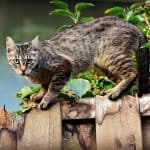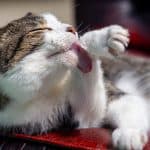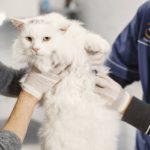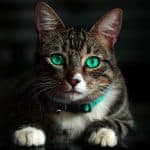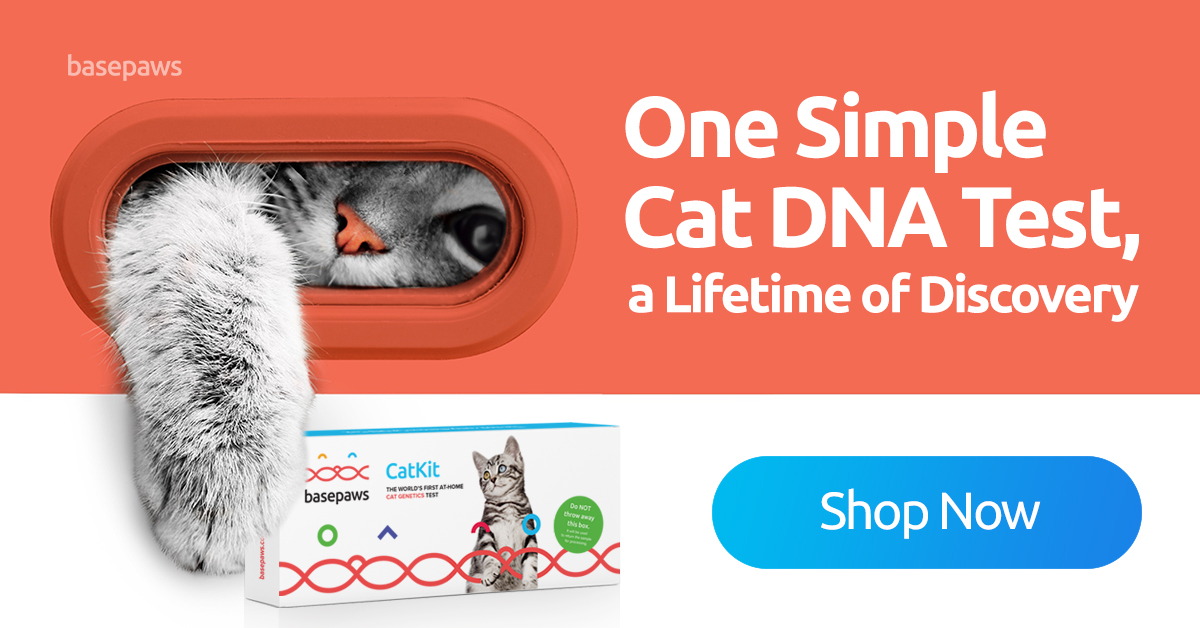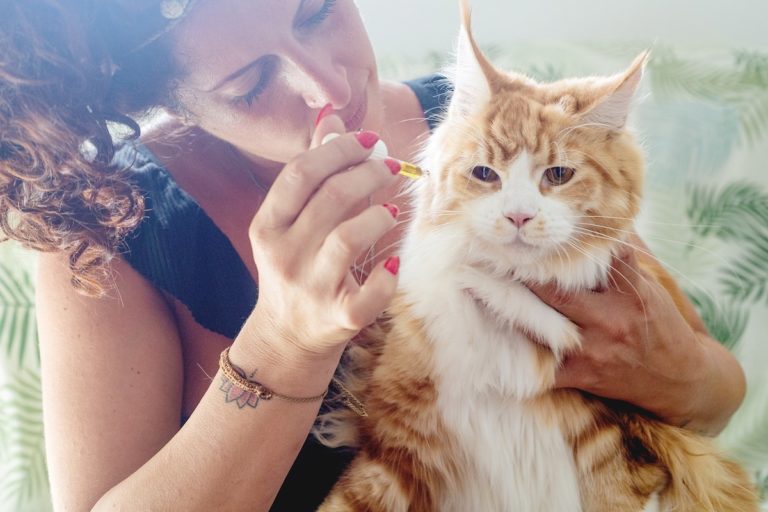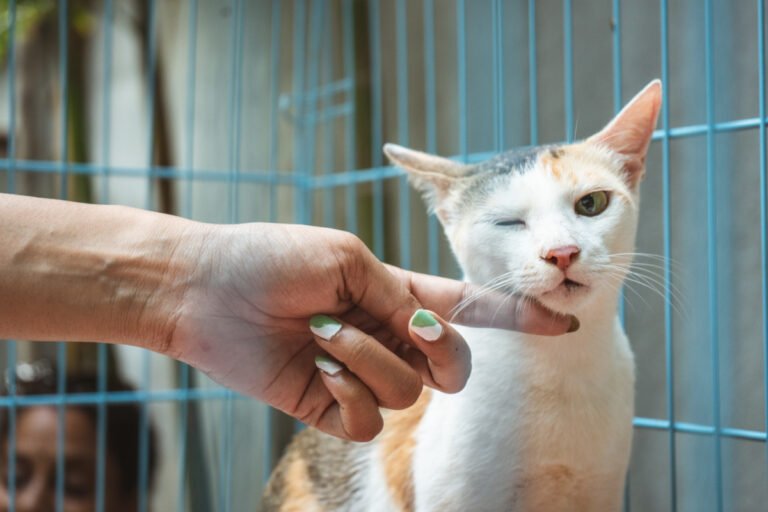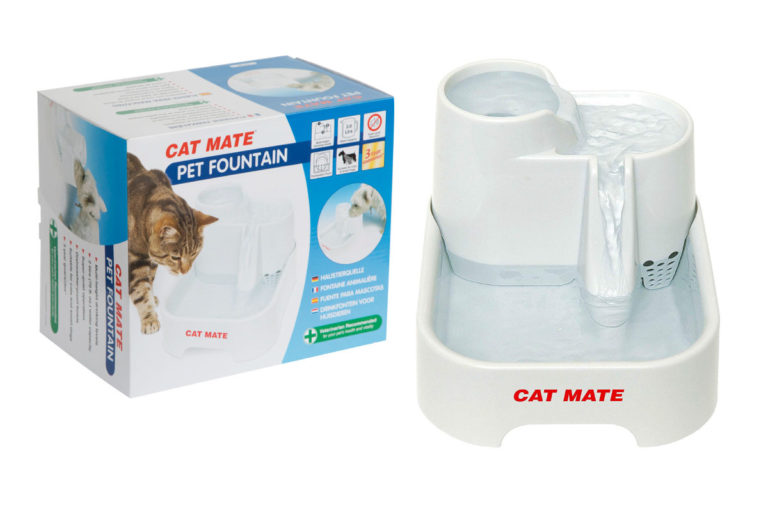Cats today live longer than any cat in history. In the 1980s domestic cats generally didn’t live past the age of 7. In the 1990s this had only increased to 9 years old. Now, however, you can reasonably expect your cat to stay around until they are in their mid to late teens, or even their early twenties. All this is due to advances we’ve made in our understanding of cats, their inner biology and their nutritional needs.
With more cats reaching ages where they are considered seniors we are also being introduced to more feline illnesses that especially plague elderly cats. To give you an idea of what to prepare for and how likely your elderly cat is to fall ill, we list the top 8 most common illnesses in older cats. We include tips on how to prolong your cat’s life by keeping them healthy for as long as possible.
DISCLAIMER: This post may contain affiliate links. If you click one of these links and decide to make a purchase, we may receive a small commission. This comes at no extra cost to you and helps to keep the site alive and up to date. If you want more information, please review our Privacy Policy. Thank you for your support!
Top 8 Most Common Illnesses In Older Cats
Even if your cat is still a junior or a young adult in its prime, it is worth considering what their future could hold. After all, little kittens grow up to be grumpy elderly cats, and a lot can happen along the way. Check out our list of the top 8 most common illnesses in older cats to see what could be in store for your cat’s future, and how to best arm yourself against it.
Heart Disease
The most common cause of death in domestic cats, not considering euthanization, is heart failure from cardiomyopathy, which is any disease directly affecting the heart muscle. A cardiomyopathy may be congenital, meaning it is there from birth, or develop later in life. The saddest part of heart disease in cats is that it can often go unnoticed until it is too late.
Studies show that an alarmingly high percentage of cats that are asymptomatic do appear to have some form of underlying cardiomyopathy, like heart murmurs or an enlarged heart muscle. Prevalence significantly increases with age, from around 15% in younger cats to no less than 40% in older cats. Combined with the high fatality rate, this puts heart disease at the top of our list of most common illnesses in older cats.
The symptoms of heart disease in cats include lack of appetite, weight loss, a reluctance to move or be active and an irregular respiratory rate. Your cat may start panting or breathing very heavily out of nowhere, and possibly have their tongue sticking out a bit. Pay attention to the color of their lips and tongue. If they turn blue or purple, it means your cat is not getting enough oxygen and you should seek out emergency care immediately.
Another life threatening complication that can occur with heart disease are thromboembolisms, or blood clots. These blood clots can partially or fully close off the blood supply to your cat’s limbs, organs or even parts of their brain. If you notice your cat suddenly being lame in one or more limbs, bumping into things, falling over and acting completely distressed, that is another reason to rush them to the vet.
Since most cases of heart disease in cats don’t get diagnosed until they develop into some form of heart failure or stroke, it is difficult to give a prognosis on the lifespan of cats with cardiomyopathy. The most important thing you can do to give your cat a fighting chance is to keep up their general health. That way, if something unforeseen happens, they are in the best shape to recover from it and live another day.
Aside from that, make sure you take your cat, or any pet for that matter, to the vet regularly for checkups. It is easy to assume that everything is okay because you don’t see anything wrong with your cat on the outside. But heart disease is a silent killer that sneaks up on you when you least expect it. Your vet is skilled at recognizing early warning signs, which might save your cat’s life.
Related Post: Is Pet Insurance Worth It For Indoor Cats?
Is pet insurance worth it for indoor cats? Read this guide to learn about pet insurance for cats and calculate if it is really worth it for your indoor cat.Chronic Kidney Disease
Chronic Kidney Disease (CKD) is another one of the most common illnesses in older cats. If your cat is lucky enough to live past the age of 11 years old, which puts them in the senior cat range, there is about a 30% chance of their kidneys starting to fail. Unfortunately, CKD is irreversible and ultimately fatal.
Early symptoms of CKD in cats are increased thirst and urination, dehydration and unexplained weight loss. These symptoms set in very gradually, so you might not notice them right away. As the disease progresses, it will be increasingly difficult for your cat’s kidneys to filter all waste products from the blood. As the waste products build up, your cat may lose their appetite, become lethargic and develop digestive problems, such as diarrhea, vomiting and constipation. Dental problems, high blood pressure and anemia are also likely to occur alongside CKD.
The upside is that CKD generally progresses very slowly. A kidney disease diagnosis doesn’t necessarily mean that your cat is going to die soon, especially if you catch it early. Veterinarians distinguish four different stages of chronic kidney disease in cats. If your cat is diagnosed with stage 1 or 2 kidney disease, you can expect them to live for many more years with the proper care. Cats with stage 3 kidney disease on average manage to survive for almost 2 years. Things get more precarious when your cat reaches stage 4, which means they are in full blown renal failure. Cats that have progressed this far tend to pass away within days or weeks.
Luckily, there are plenty of diets, treats and supplements you can try to keep your cat in good health and actually prolong their life. Take your cat to the vet at least once a year during stages 1 and 2, and at least twice a year during stage 3. Your vet will perform blood and urine analyses that will tell you exactly where your cat’s health is at and what steps you can take to support them. For specific recommendations on the best products for cats with CKD, please check out our detailed guides on kidney disease in cats.
Related Post: Chronic Kidney Disease In Cats: Symptoms And Treatments
Does your cat suffer from CKD? Read our guide on chronic kidney disease in cats to learn everything you need to know to increase her quality of life.Related Post: Best Supplements For Cats With Kidney Disease
Cats with CKD have varying symptoms. Read our guide to learn how to alleviate each of them using the best supplements for cats with kidney disease.Arthritis
Next on our list of most common illnesses in older cats is arthritis, specifically osteoarthritis, which is a deterioration of the cartilage and bone in the joints of the body due to inflammation or injury. Studies have shown that arthritis doesn’t affect just elderly cats; younger cats already have a 40% chance of developing arthritis in one or more joints. However, the disease does become more prevalent as cats get older. Past the age of 12, over 90% of cats are arthritic to some degree.
Arthritis affects a cat’s mobility. If your cat is becoming arthritic, one of the first things you will notice is that they are more hesitant to jump on to and off of higher surfaces. It will take them longer to get up and down stairs, their balance isn’t what it used to be and they might even limp from time to time. Inflamed joints will feel slightly warmer to the touch, so you can do a first check by simply petting your cat. Be careful though, as your cat might be in pain. But if you do suspect that your cat has arthritis, it is worth taking them to the vet to confirm.
As a disease, arthritis is incurable, but not fatal. In fact, arthritic cats can live out their days very happily if the symptoms are managed correctly. This mostly involves keeping your cat active with play and physical therapy, and managing their pain and mood. Next to that, your vet may prescribe cartilage rebuilding injections or other medications to help control your cat’s arthritis. In rare cases, cats require surgery to repair injured joints and restore some of their mobility.
While arthritis itself isn’t fatal, it can definitely decrease your cat’s quality of life to the point that they become depressed and lose their spark. A depressed cat will be very lethargic and unwilling to eat. Cats need to eat every day to keep their metabolism going and prevent toxins from building up in their liver. If your arthritic cat stops eating for more than 24 hours, don’t waste any time and immediately take them to the vet.
One solution that many cat parents have found to do wonders to alleviate their cat’s arthritis is CBD oil for pets. CBD works on all fronts of the disease by lifting your cat’s spirits, relieving their pain and reducing inflammation in their joints. If you are interested in learning more about CBD oil for cats with arthritis, please read our guide:
Related Post: Is CBD Oil Good For Cats With Arthritis?
Is CBD oil good for cats with arthritis? Find out exactly how your arthritic cat can benefit from CBD oil for cats and how to find the best product for your pet.Related Post: Feline Arthritis: Signs, Symptoms And Treatments
Many senior cats suffer from feline arthritis. Learn to recognize signs and symptoms of feline arthritis in your elderly cat and how to treat them.Dental Disease
One of the most common illnesses in older cats as noted by veterinarians is dental disease. Sadly, it often goes unnoticed by cat owners. Nevertheless, it is important to recognize and deal with dental disease in cats as soon as it pops up. The longer you let it fester, the bigger of a problem it will become as your cat gets older.
The most obvious sign that your cat has dental problems is bad breath. If your cat happens to lick your nose or yawn right in front of your face and you smell something foul coming from their mouth, have your vet check out their teeth. Cats are very good at hiding any pain and vulnerabilities, so don’t feel bad if you don’t catch it immediately. But when you do, don’t wait around and see if it will clear up.
Gingivitis is a painful inflammation of the gums caused by a buildup of plaque and tartar. It can make it difficult for your cat to eat dry foods especially. If you notice your cat passing on their kibble and waiting for their wet meal of the day, it could be a sign of dental disease. When left untreated, gingivitis eventually develops into periodontal disease, or periodontitis. This is the type of dental disease that is most prevalent in older cats.
Periodontitis presents with severe inflammation of the gums, often paired with a visible buildup of tartar and bacterial infection. The gums start receding, laying bare the root of the tooth. In severe cases, the supporting structures of the tooth also get diseased and start to break down, leaving extraction as the only option for treatment.
The last stage of dental disease in cats is marked by the diseased teeth breaking off layer by layer until they are gone. They will have dark spots on them and the gums will swell up around them. As parts of the tooth start breaking off, it will look to be receding back into the gums, which explains why it is called tooth resorption. The decaying tooth can cause further inflammation of the gums and the jaw bone and leave your cat with chronic pain.
Your best defense against tooth decay in older cats is to start them on a proper teeth cleaning routine when they are still young. There are special toothbrushes, toothpastes and dental gels that you can buy specifically for cats. Use them once a day to keep your cat’s mouth fresh and free of bacteria. If that is too much for you, then you should take your cat in to the vet’s office for a checkup and a teeth cleaning about once every 6 months. The sooner you catch your cat’s dental issues, the less of a problem they will be in the long run.

Hyperthyroidism
Hyperthyroidism is another one of the most common illnesses in older cats. A recent study found that overall around 12% of domestic cats are likely to contract the disease. Older cats are significantly more at risk, as are female, non-purebred cats. The actual cause of hyperthyroidism in cats remains a mystery, though studies have revealed links between thyroid disease and nutritional imbalances, as well as environmental contaminants known as thyroid-disrupting compounds or endocrine disruptors. This leads to the thyroid getting enlarged and becoming hyperactive.
The basic function of the thyroid gland is to secrete hormones that regulate metabolism and protein biosynthesis in the body. A hyperactive thyroid secretes more hormones than are necessary. This in turn speeds up your cat’s metabolic rate and impedes the formation of new proteins. As a result, your cat will display an increase in thirst and appetite, while still having trouble keeping the weight on.
As it progresses, hyperthyroidism often causes gastric issues, like diarrhea and vomiting. Some cats become more agitated from their increased metabolism and will show signs of physical hyperactivity. Hyperthyroid cats almost always suffer from high blood pressure and generally have an elevated heart rate. They also tend to have matte coats that look poorly groomed.
If you recognize any of these symptoms in your cat, take them to the vet to get a definitive diagnosis. Your veterinarian will perform a physical exam and take some blood to determine your cat’s thyroid hormone levels. If it turns out that your cat does have hyperthyroidism, all is not lost. Depending on your cat’s state of health and your financial means, there are different treatments available to help manage, or even cure, the disease.
The most effective, but also most expensive, method of treating hyperthyroidism is through radioactive iodine therapy. Radioactive material is injected into your cat’s bloodstream and absorbed by the thyroid gland, where it destroys all unhealthy tissue. Most cats that receive this form of therapy are effectively cured within two weeks of getting treated.
Another way to treat hyperthyroidism is by surgically removing the thyroid gland. Although this method is highly effective and more affordable than radioactive iodine therapy, it is less than ideal for elderly cats, especially if they suffer from other feline illnesses, like CKD. The anesthesia will put a lot of strain on their heart and kidneys, which they might not survive.
For older cats, the best way to handle a hyperthyroidism diagnosis is with medication and a healthy thyroid care diet. Unfortunately, this won’t cure the disease, but it does help to keep the symptoms manageable and give your cat the best possible quality of life.
Related Post: What Is The Best Food For A Cat With Hyperthyroidism
Does your kitty have an overactive thyroid? Read our guide on what is the best food for a cat with hyperthyroidism to give a boost to your feline's health.Diabetes
About 0.5-1% of cats suffer from diabetes, making it another one of the most common illnesses in older cats. While diabetes isn’t a disease strictly affecting or more prevalent in elderly cats, as diabetic cats get older their chances of developing complications from the disease do increase. Diabetic cats mostly suffer from Type 2 diabetes, also known as adult-onset diabetes. It is caused by a combination of obesity, lack of exercise and possibly some hereditary predisposition.
The symptoms of diabetes in cats develop very slowly and largely mimic those of chronic kidney disease. As your cat’s blood sugar rises, they will become more lethargic and start to drink and urinate more frequently. The main difference between CKD and diabetes is that with the latter, cats tend to have a larger appetite and will gain weight, whereas cats with CKD are more likely to eat less and wither away.
As diabetes progresses, the risk of comorbidities occurring increases. These include renal failure, blindness, heart disease and strokes. That’s why it is super important to take good care of your cat’s health if they’ve been diagnosed with diabetes. The average lifespan of diabetic cats greatly varies with the amount and quality of care they receive. With proper treatment, cats with diabetes can live long, happy lives.
The best treatment against diabetes is a healthy lifestyle. Be mindful of the type and amount of food you give your cat and keep an eye on their weight. Play with your cat every day to keep them active and in shape. A fat, Garfield-like cat might look cute, but it isn’t good for their health.
If you are in doubt over the quality of your cat’s food or want to explore healthier alternatives, check out our Cat Food Database, where we compare and rate 1000+ commercially available cat foods and treats on their nutritional value and suitability for cats suffering from various ailments, including diabetes.
Related Post: How Many Calories Does My Cat Need?
How many calories does my cat need? Use our cat food calculator to find out how much to feed your cat or kitten, whether they are fit or need to lose weight.Cancer
Cancer is another illness that is sadly included with the most common illnesses in older cats. Cancer is an umbrella term for all disease caused by malignant tumors, which are clusters of abnormal cells that grow without control in the body. Compared to dogs, cats are less likely to develop tumors. But when they do, the tumors are more likely to be cancerous.
Prevalence of cancer in older cats is very much linked to the type of cancer, of which there are many. However, a recent survey of the Swiss Feline Cancer Registry found that 29% of all recorded feline patients presented with malignant tumors of some kind, with a higher likelihood of occurrence in middle-aged and elderly cats. The most common types of tumors found were adenoma/adenocarcinoma, fibroma/fibrosarcoma, lymphoma and squamous cell carcinoma. Common locations where the tumors were found include the mammary gland, the gastrointestinal tract, the heart and airways, the skin and the lymph nodes.
The symptoms and progression of feline cancer largely depends on the type and location of the tumor. If the tumor is pressing onto or growing inside of an organ, whatever organ it is, that’s where the symptoms will start. Sometimes there are evident precursors to the disease, for instance in the case of squamous cell carcinoma of the skin. There is strong evidence that the development of papilloma, or warts, can be a prelude to a tumor developing later.
Feline cancer is rarely cureable, but almost always treatable. Just like humans, cats can receive surgery, chemotherapy and radiotherapy to remove or reduce cancerous tissue, which will help to prolong your cat’s life. That said, cancer treatment for cats is very expensive. The initial diagnosis can already set you back a couple of hundred to a thousand dollars. After that, your cat’s specific cancer will determine which treatment options are available. Surgery is generally the most affordable, with chemotherapy as a close second. Still, either one will cost you one to several thousand dollars. Radiotherapy is the most expensive treatment, but can be very effective in certain cases.
Related Post: Is CBD Oil Good For Cats With Cancer?
Is CBD oil good for cats with cancer? How does it affect them? Read on to find out everything you need to know about CBD for cats.Related Post: Papillomatosis In Cats: Do Cats Get Warts?
Papillomatosis in cats is rare, but cats do get warts. And they might be the opening act to something much worse. Learn how to protect your cat from warts here.Digestive Issues
Digestive problems in cats can take on many forms and have many causes. Your cat could be vomiting regularly, leaving loose stools in (or next to) the litter box, or not defecating at all. It could be from hairballs, a food sensitivity, an allergy, poisoning, an underlying illness, or a bug. The fact is, most digestive issues in cats that don’t present with clearly identifiable secondary symptoms often go undiagnosed. Luckily, most gastrointestinal problems resolve themselves after some time on a proper diet.
However, there are cases where the symptoms last for such a long time that the condition can be considered chronic. And, as with most chronic conditions, symptoms tend to get worse as your cat gets older. Food sensitivities, for instance, generally start with very mild symptoms that might not even be noticeable to you. However, prolonged exposure results in a buildup of allergens in your cat’s system, making symptoms gradually worse over time. Your cat might have appeared fine eating something when they were young, while it induces immediate vomiting when they are older.
The best approach to dealing with undiagnosed digestive issues in cats is to do your best to eliminate all possible allergens from their food and their surroundings and keep up their overall health and wellbeing. If you don’t know what is causing your cat’s gastric upset, your best bet is to give them a limited ingredient diet. Limited ingredient diets, or LID’s, contain only a single source of animal protein (usually poultry) with minimal added ingredients.
To ensure that your cat gets all the nutrients they require, have your vet perform regular blood tests to keep track of their mineral levels. Whatever your cat’s specific needs may be at any given moment, there are plenty of supplements available on the market that can help to balance out their biochemistry and keep them healthy.
Related Post: Why Does My Cat Eat Until He Throws Up?
Is your cat regularly vomiting up his food? Find out why your cat eats until he throws up and what you can do about it.Related Post: Best Cat Food For Sensitive Stomach
Does your cat have digestive issues? Choose the right cat food for digestive problems using our in-depth guide on the best cat food for sensitive stomach cats.How To Prolong Your Cat’s Life
After all this talk of disease, you might be wondering what you can do to prolong your cat’s life and keep your cat safe and healthy for as long as possible. Don’t worry! We have some great tips to prepare your cat and yourself for whatever lies ahead.
Do A Cat DNA Test
Curious to know if your cat has any predispositions for specific diseases? Try BasePaws DNA test for cats. This will tell you exactly how your cat’s genetic make-up might affect their health, now and in the future. The best thing is, whenever BasePaws extends their testing to include markers for more diseases, they will update your cat’s test results free of charge! This means that with one payment of 129 USD, you can forever be one step ahead when it comes to your cat’s health and keep them with you for as long as possible.
Or, if you want to really get to know your cat inside and out, you can have their whole genome sequenced for just 499 USD. This will give you all the information from the regular DNA test, the BasePaws dental test, plus the raw data of your cat’s genome. On top of that, you get access to BasePaws own feline genome specialists to ask them anything you want to know about your cat’s health and DNA. In return, your cat’s sequenced genome will directly contribute to science by helping researchers to better understand cats and feline illnesses in general. So you won’t just be helping your own cat, but all cats everywhere.
Pet Insurance For Older Cats
Another great way to take care of your cat is by arming yourself against any unforeseen expenses. Veterinary care is rather expensive in general. But when you are taking care of an older cat especially, the costs can stack up quickly. Between the vet visits, specialized diets and supplements carefully curated to keep your cat alive, you might soon find yourself wondering how you are going to pay for all of this and still feed your family.
You might have already considered getting pet insurance for your elderly cat, but been discouraged by the increased premiums they charge for older pets. And rightly so.
Fortunately, there is a solution for pet owners in the US that functions much like regular pet insurance, without actually being a pet insurance company. Eusoh is a community health sharing plan for pet owners. As a Eusoh member, you pay a low monthly subscription fee of just 17 USD. On top of that, any health care costs that were reimbursed to Eusoh members are divided among all members in the form of a care contribution. In the end, the total amount paid per member each month is never more than 48 USD, but often significantly less than that.
What’s more, Eusoh doesn’t charge more for elderly pets! No matter how young or old your cat or dog is, the price doesn’t change. That is quite an improvement over other pet insurers, who will charge as much as 200+ USD a month for pets older than 10.
If you choose to sign up with Eusoh, you can get reimbursed for your vet visits, prescribed medications, surgeries, wellness care and even alternative treatments for all injuries and feline illnesses, including cancer, congenital and hereditary conditions. The annual OOP is 250 USD, which puts your costs for veterinary care at maximally 826 USD per year (12 x 48 membership + 250 OOP). In exchange for that, the Eusoh community will reimburse up to 8,500 USD of your yearly pet medical expenses. Now that’s a great deal!
Pre-existing conditions, however, are not covered by the Eusoh community. So if you don’t have any pet insurance in place yet and your cat is still in good health, now is the time to act! Any condition diagnosed after joining Eusoh will be fully covered.
Eusoh is temporarily offering a discount of 4 USD on their subscription fee, making it just 13 USD per month for your first year of membership. Use code LUCKY when you sign up to take advantage of this offer. Your lucky cat will thank you.




